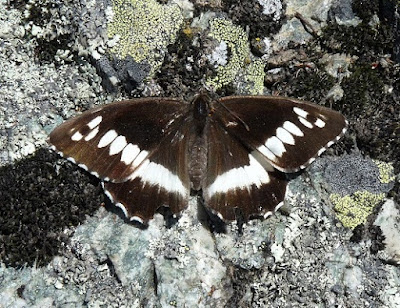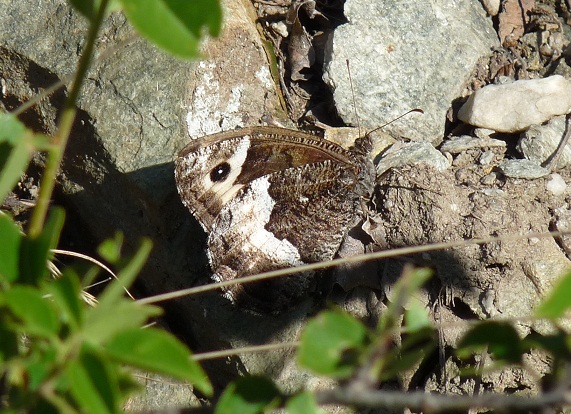January - Dusky Warbler (Bredene); last year's bird of the year lingered on in its favourite park so I got my year listing off to a good start by paying it a third visit on 2nd.
February - Woodcock (Ostend); a prolonged cold spell brought unprecedented numbers of this species to the coast, where I got a rare opportunity to see them on the ground.
March - Oriental Turtle Dove (Heist); my first real twitch of the year and the first new bird for my Belgian list.
April - FRANKLIN'S GULL (Beveren); a major expedition was required for me to see this American vagrant during its short stay in deepest West Flanders.
May - Griffon Vulture (Brabant Wallon); 24 slowly taking off from their overnight roost.
June - Nightjar (Kalmthout Heath); a long-overdue reacquaintance with the churring goat-milker.
July - Rock Thrush (Alps); a nice male seen exceptionally well on my first evening in the Alps.
August - Zitting Cisticola (Heist); a constantly-displaying bird confirming that the species is slowly recolonising the coast.
September - Nutcracker (Logbiermé); 3 or 4 birds comically struggling their way uphill with their crops full of acorns.
October - Short-eared Owl (Brussels); THE surprise of the year was a migrant seen from my living room!
November - Western Swamphen (Het Vinne); another successful twitch to a first for Belgium.
December - Ross's Gull (Nieuwpoort); another first for Belgium seen really well as it repeatedly passed just above my head.
So, Franklin's Gull was the only new bird I saw this year and is, therefore, my bird of the year for 2021. It was not the only addition to my lifelist, though, since sorting through my Brazilian photo's for another project led me to review a parrotlet picture I took back in 2011. At the time, I was told that flavistic individuals were much commoner amongst Blue-winged Parrotlets than the local Dusky-billed Parrotlets. Since the former species had never been recorded in the area and the local bird-guide told me it wasn't possible, I forgot all about my picture. Spurred on by several, unconfirmed reports of Blue-winged Parrotlets in exactly the same location over the intervening years, and noticing a second, normal-coloured individual, which also shows the all-important pale upper mandible, I thus sent my picture to some new contacts I didn't know back then, all of whom agree it is the first documented record of Blue-winged Parrotlet (now split into three species) for the Alta Floresta region!
As an antidote to the various travel restrictions, I set myself the dual targets of seeing 250 species in Belgium and 150 within Brussels this year. I soon realised, though, that the two were incompatible since birding in Brussels meant I was missing good stuff elsewhere, and vice versa. I thus dropped the Brussels one (which ended up on 116 species) in favour of a Belgian big year. It was difficult to stay motivated throughout the ongoing pandemic, however, especially once I'd caught up with most of the easy summer migrants, meaning the remaining species all required considerable effort or several attempts to see. Despite falling just short, at 240 species, this is still my biggest Belgian year so far and the additional effort resulted in seven new species for my all-time Belgian list (Oriental Turtle Dove, Franklin's Gull, Sooty Shearwater, Rustic Bunting, Guillemot, Western Swamphen and Ross's Gull), which now stands at a respectable 325 species. I left Belgium on just four occasions this year, all very brief, adding Hooded Crow (Berlin), plus 7 species in the Alps (Short-toed Eagle, Hoopoe, Crag Martin, Rock Thrush, Rock Bunting, Western Bonelli's Warbler and Italian Sparrow), and thus taking my overall year-list to 248 species. With all my focus on finding new birds, the butterflies and odonata took a back seat this year and I didn't see any new species of either in Belgium, although my butterflying break in the Alps was very successful, with a total of 26 new species out of 61 identified in just two full days there.
I do not plan another big year attempt for 2022 and am looking forward to some more relaxed birding, regularly visting my Brussels patch and finding my own birds rather than constantly chasing after other people's.
Stay safe, healthy and make the most of what nature has to offer in 2022.
Stay safe, healthy and make the most of what nature has to offer in 2022.



















































